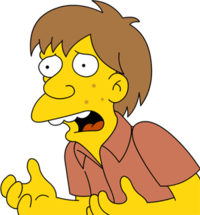
Directed by Alain Resnais.
Starring Delphine Seyrig and Giorgio Albertazzi.
Starring Delphine Seyrig and Giorgio Albertazzi.
In a Nutshell: A man tries to convince a woman of their past relationship.
Now this is one heck of a cinematic puzzle. Last Year at Marienbad is no clear-cut tale; its story folds time and space over each other until memory and reality become indistinguishable (both to the audience and the film’s characters). Alain Resnais has claimed the film had no meaning, but that does not give it less merit. As an experiment in film narrative, Marienbad is captivating, even if my hold on the film is still developing. The initial plot is initially and deceptively simple; a woman referred to only as A (Delphine Seyrig) attends a party at a château. She meets a man, X (Giorgio Albertazzi) who claims the two had a relationship last year at Marienbad and planned to meet at the château at year later to leave her controlling partner, M (Sascha Pitoeff).
Now this is one heck of a cinematic puzzle. Last Year at Marienbad is no clear-cut tale; its story folds time and space over each other until memory and reality become indistinguishable (both to the audience and the film’s characters). Alain Resnais has claimed the film had no meaning, but that does not give it less merit. As an experiment in film narrative, Marienbad is captivating, even if my hold on the film is still developing. The initial plot is initially and deceptively simple; a woman referred to only as A (Delphine Seyrig) attends a party at a château. She meets a man, X (Giorgio Albertazzi) who claims the two had a relationship last year at Marienbad and planned to meet at the château at year later to leave her controlling partner, M (Sascha Pitoeff).
The movie flashes back to the night of A and X’s encounter, and every shot changes. Costumes, scenery, and even the exact events at each encounter never stay constant. Characters change their perceptions and remembrances as new details come to light, almost as though some unseen force is changing their minds (and therefore the events) at whim. On the surface, it is narrative nonsense, a stream of consciousness that rolls truth, lie, and fantasy into one incoherent visualization. Taking into account Resnais’ “meaning” to Marienbad, I conclude that the film is simply that; an exercise in the control and the surreal. Characters do not act on their own, but as though under a spell (A becomes increasingly receptive to X as details from their alleged encounter fill in, X remembers M committing a murder, and then changes his mind). They are puppets, just as every single film character is a tool utilized by its director and writer. A is ordered around and bends to X’s will while M creates conflict (or maybe not).
What I believe Last Year at Marienbad can be whittled down to is a look into the subjunctive, a depiction of controlled perfection in the mind of its author. The lavishly designed château becomes a ghostly labyrinth with its guests occupying their space like statues. Francis Seyrig fills the air with an organ score worthy of a horror movie, drawing us further into the mansion’s haunting elegance. The atmosphere creates an unreal atheistic for its constantly shifting story, which exists for its creator (X) to tell it his own way. Last Year at Marienbad provides no answers, and has been famously reveled for its ambiguity. I can hardly fault it for its artificiality and its lack of resolution; that is the point. Last Year at Marienbad is no more than a means to observe the way we control our own memories, what we choose to omit and desire, whether they exist or not. But such a puzzling film has no clean explanation; this is only how I remember it.

No comments:
Post a Comment